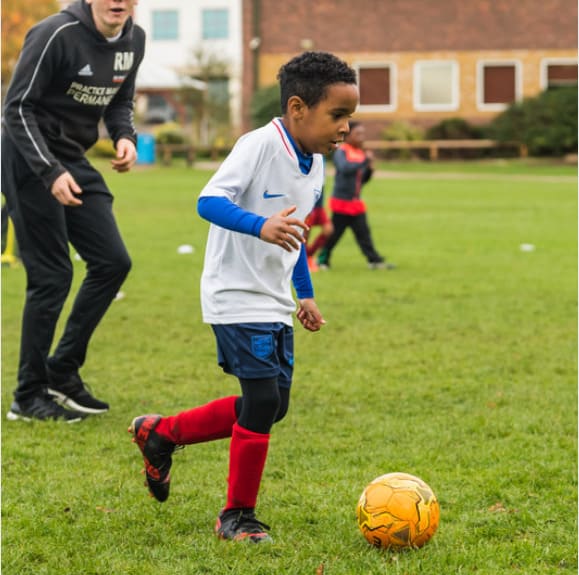Understanding the Importance of Breaks for Active Kids
When your child is bursting with energy on the football field or playground, it’s easy to forget how much they need downtime. Teaching active kids to take breaks is vital for their health, happiness, and safety. By helping your child find the right balance between activity and rest, you set the stage for a lifetime of positive habits and enjoyment in sports. Signing up your child for a program like We Make Footballers isn’t just about skill-building. It’s about ensuring every child—no matter their talent or ambition—gets to have fun, feel included, and stay well. Breaks are a big part of that.
Why Breaks Matter in Physical Activity
Kids love to move, but without adequate pauses, they risk burnout or injury. Breaks during play and sports help prevent fatigue, reduce the chance of strains or sprains, and boost enthusiasm for coming back week after week. When children experience activities as fun rather than exhausting, they’re more likely to develop a lifelong love of movement.
Recognising When Your Child Needs a Break
It’s not always obvious when a child is pushing their limits. Watch for signs like flushed cheeks, heavy sweating, sluggish movements, irritability, or a sudden lack of interest. If your little one seems frustrated or starts making mistakes they usually wouldn’t, it’s likely time for a break. Gentle encouragement from parents and coaches can make all the difference.
How Much Physical Activity is Healthy for Kids?
How much exercise is too much? The answer depends on your child’s age:
- Ages 3-5: Should be physically active throughout the day, with a mix of free play and planned activities.
- Ages 6-17: Need at least 60 minutes of moderate to vigorous physical activity daily. This can be split up—think PE at school, playing football, and outdoor playtime.
Remember, what matters most is a balance—children need to move, but also to rest and recharge.
The Role of Listening to the Body
Help your kids tune in to their own energy levels. Teach them that it's okay to slow down, sit out for a few minutes, or ask for help when they’re tired. This helps prevent accidents and encourages self-confidence in managing their own well-being.
Hydration Guidelines for Active Kids
Active children can get dehydrated faster than adults. The right hydration habits help keep them energised and focused, and support temperature regulation during training.
- Before Activity: Have your child drink a glass of water about 30 minutes before exercise.
- During Activity: Offer small sips every 15-20 minutes, especially if it’s hot, even if your child doesn't ask.
- After Activity: Another glass of water to replace fluids lost through sweat.
Water vs. Sports Drinks: What’s Best?
For most kids, water is all they need—even after a busy training session. Sports drinks with electrolytes can be useful for sessions lasting over an hour in the heat, but avoid those high in sugar. Never use energy drinks—they’re unsafe for children and can cause unwanted side effects.
Nutrition and Snacks for Energising Active Kids
Balanced snacks keep children fuelled for fun, learning, and play. Opt for nutritious, easy-to-pack choices, and aim for eating every 2–3 hours when activities stretch throughout the day.
Quick Snack Ideas to Keep Kids Refueled
Here are parent-friendly, kid-approved snack ideas:
- Banana or sliced apple with nut butter
- Wholegrain crackers with cheese
- Low-sugar yogurt with fresh berries
- Trail mix (nuts, seeds, and dried fruit)
- Hummus and veggie sticks
- Mini sandwiches with lean protein
These snacks support energy and concentration and are easy for kids to eat on the go.
Common Risks of Overexertion in Active Kids
Children who skip breaks or ignore their bodies can end up with injuries or emotional stress. Common risks include muscle strains, sprains, heat exhaustion, and even anxiety about performance.
Long-Term Consequences of Ignoring Breaks
Constant overexertion can affect a child’s growth, mobility, and mental health. Kids need time to rest their muscles and minds. Not taking breaks can lead to chronic pain, fatigue, or even a loss of interest in playing with friends.
Practical Tips for Encouraging Breaks and Self-Care
As a parent or coach, you can make rest and self-care ‘normal’ parts of sport and play. Here’s how:
- Build regular water breaks and snack times into your child’s activity schedule.
- Teach your child that rest is as important as playing hard.
- Display positive attitudes about taking breaks—no guilt required!
- Create a simple ‘chill-out zone’ at sports practice or home.
How to Respond When Your Child Needs a Break
If your child shows signs of exhaustion or discomfort, stay calm. Guide them to a shady, quiet place, offer water, and listen to what they’re feeling. If the tiredness or discomfort lasts, check in with a doctor or healthcare professional.
Promoting a Positive Attitude Toward Rest
Praise your child for knowing when it's time to sit out and talking about how rest helps them play better. Remind them: even star athletes take breaks!
Balancing Fun and Fitness: Keeping Kids Engaged and Healthy
The best sports programs keep kids smiling and making friends, not just chasing scores. A positive, nurturing environment—like We Make Footballers — means everyone gets a chance to play, no matter their ability.
Finding the Right Programs and Schedules for Your Child
Choose a coaching school that fits your routine and your child’s personality. Look for accessible locations, friendly coaches, and a welcoming group for both kids and grown-ups.
Building Community and Support for Parents and Kids
Joining a program isn’t just good for kids. Parents get to meet, relax, and make connections, too. Plus, consistent communication and customer service mean you’re always in the loop.



